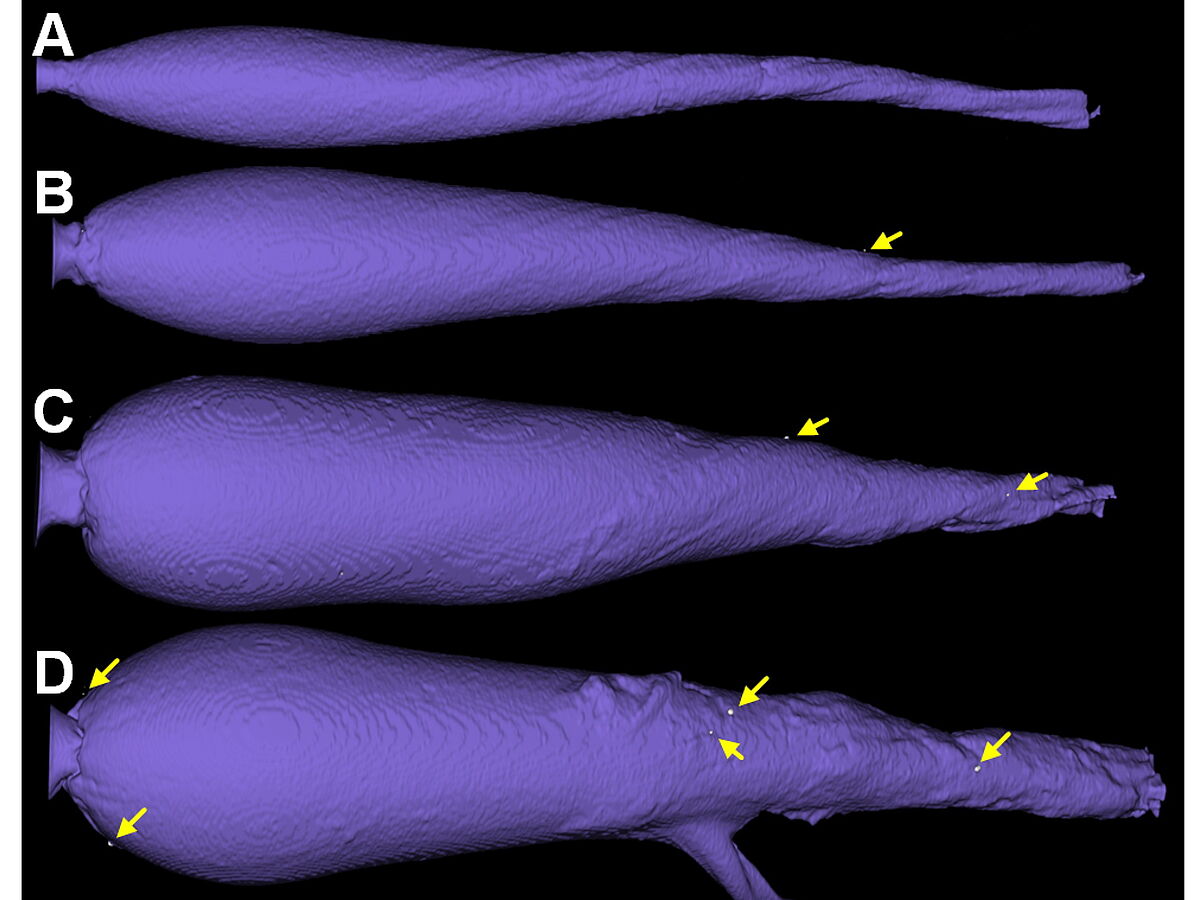A new study concerning terminal ballistics of lead-containing and lead-free bullets shows that both materials are equally suitable for hunting in accordance with animal welfare. Lead-free bullets even leave smaller fragment clouds than leaded ones.
Scientists of the University Hospital RWTH in Aachen, the German Leibniz Institute for Zoo and Wildlife Research (IZW) and the University of Applied Sciences Eberswalde (HNEE) analysed the characteristics of bullets during impact, penetration or piercing of a target in a terminal ballistic experiment. The results have been published in the scientific online journal PLOS ONE. This study, which is supported by the Federal Ministry of Food and Agriculture and the Ministry for Agriculture, Environment and Consumer Protection of Mecklenburg-Western Pomerania, enhances the research on the effect of notably lead-free hunting bullets. A detailed comparison revealed that lead-free bullets differ in their terminal ballistic behaviour. One type of lead-free bullets (deforming bullet) exhibited a terminal ballistic behaviour that was in accordance with the lead-containing reference bullet. The scientists further observed the diffusion of hundreds of tiny lead fragments during firing with lead-containing ammunition, whereas only a few fragments occurred while using lead-free bullets.
For their study the researchers compared the terminal ballistic data of four different commonly used hunting bullet types – one containing a lead-core and three made of homogenous copper alloy. The bullets were shot in a block of ballistic soap with a speed that represents typical hunting settings in the field. Each block of ballistic soap (25 cm x 25 cm x 40 cm; ~ 27 kg mass) was shot once and examined via two different measuring systems. After shooting, each soap block was scanned using computer tomography (CT) and evaluated with software developed by the RWTH Aachen. The CT visualised the resulting cavity as well as parameters like volume, depth of damage and deflection angle. Furthermore, bullet fragments can be counted and visualised three-dimensionally. Afterwards each block was cut lengthways by a usual standard procedure in order to be photographed and measured.
The results of both methods correlated strongly. However, the computed tomography provides additional information while avoiding the elaborate cutting of the soap blocks. This way, the examination of new types of lead-free ammunition concerning their hunting practicability can be improved.
Lead is known to be poisonous since ancient times; today it is one of the best known environmental pollutants.
Lead-containing ammunition has a strong effect on humans, animals and the environment. At present, the input of lead into the environment through lead-containing ammunition (estimably several tons per year) is tremendous. Minor traces of lead abrasion or small fragments are already sufficient to be toxic for an organism. Especially for animals who are at the end of the food chain, like large birds of prey and scavengers, particularly the white-tailed sea eagles, lead poisoning is one of the most common causes of death. For humans a minor amount of lead can be toxic and lead to damages of the central nervous system. The intake of lead also causes developmental disorders, particularly in children.
“The results of our study are a further step of knowledge on the way to abandonment of lead in hunting ammunition. It is a process that is already been running since ten years and is mutually supported by policy-makers, hunters and research facilities”, says Carl Gremse; scientific assistant at the University of Applied Sciences Eberswalde; Department of Wildlife Biology, Wildlife Management and Hunting Technology.
The applied results of research offer a solid knowledge base for political and private decisions concerning the application of lead-free hunting ammunition.
Deforming copper bullet (TSX). (A–D) Cavities at increasing energies. No clouds of fragments.|Picture: Felix Gremse
Publication
PLOS ONE http://www.plosone.org/article/info%3Adoi%2F10.1371%2Fjournal.pone.0102015
Contact
| Wildlife biology, wildlife management & hunting technology University of Applied Sciences Eberswalde Carl Gremse, Scientist carl.gremsehnee.de Phone: +49 3334 657196 Prof. Dr. Siegfried Rieger, Head of department siegfried.riegerhnee.de Phone: +49 3334 657188 University Hospital RWTH in Aachen Felix Gremse, Wissenschaftler fgremseukaachen.de Phone: +49 241 80-80254 Leibniz Institute for Zoo and Wildlife Research (IZW) in the Forschungsverbund Berlin e.V. Dr. Oliver Krone, Scientist kroneizw-berlin.de Phone: +49 30 51 68 405 Steven Seet, Public relations seetizw-berlin.de Phone: +49 30 51 68 125; Mobile: +49 177 857 26 73 Additional experts: Federal Institute for Risk Assessment Prof. Dr. Dr. Andreas Hensel (President) Phone: +49 30-18412-3001 Federal Institute for Property Assignments Bundesforst Department production, sale Malte Eberwein Phone: +49 30 481-636 Federal Ministry for the Environment, Nature Conversation, Building and Nuclear Safety Gerhard Adams (Regierungsdirektor) gerhard.adams@bmub.bund.de Phone: +49 30 183050 Federal Ministry of Food and Agriculture Peter Lohner (MinR) Phone: +49 228 99 529-4342 Schleswig-Holsteinische Landesforsten Tim Scherer (Director) Phone: +49 4321 55920 Deutsche Versuchs- und Prüf-Anstalt für Jagd- und Sportwaffen e.V. (DEVA) Phone: +49 5255 - 734 info@deva-institut.de |


